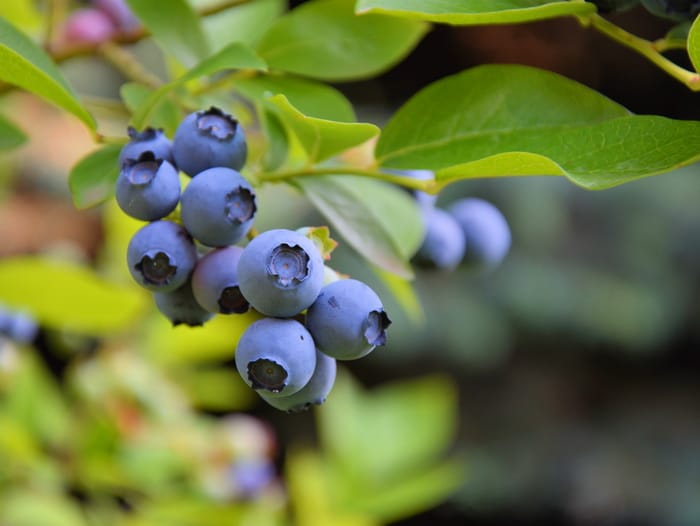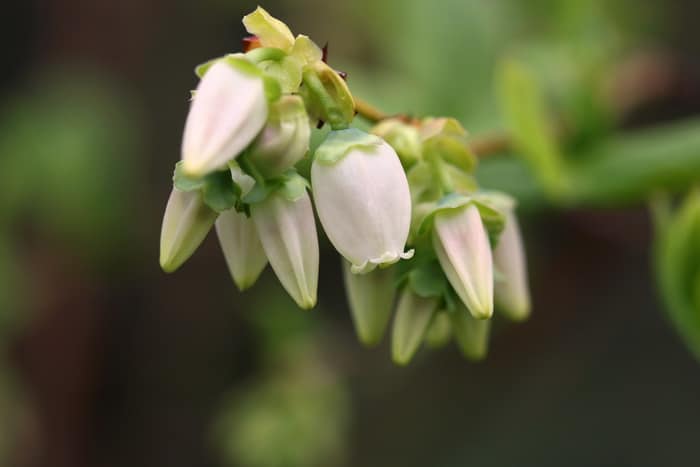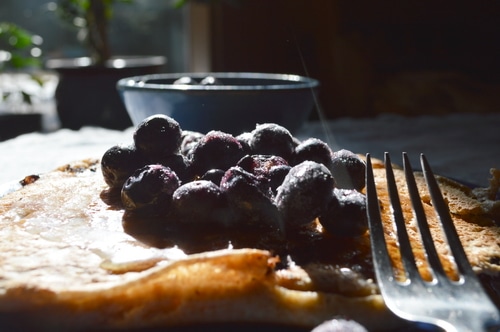Learn how to grow blueberries, or bilberries, in your zone 4 garden. Enjoy these delicious fruits fresh and at the peak of ripeness from your own garden.
Blueberries are one of my favorite berries, whether fresh or frozen, or even in jam. They are naturally high in antioxidants, and are recommended as a super fruit. Berries are lower in natural sugars when compared to tree fruit, and the rich purple to blue tone of most blueberry varieties is proof of their antioxidant properties. Learn how to grow blueberries, and enjoy this tasty fruit fresh from your own garden. The color of blueberries ranges from deep blue, to pink in some varieties, and you can choose from high bush to low bush cultivars depending on your garden space.

Growing conditions:
Blueberries and bilberries prefer full sun. If you need to start seed for these bushes, rather than buying young plants or starting new bushes from cuttings, the seeds will need to be planted in a damp and shady area. Once the bushes have begun growing, then they can be transplanted into full sun.
For best fruit production, blueberries and bilberries need the ability to cross pollinate. There are lots of varieties of blueberry. The best hardy cultivars include bluecrop, blue ray, Blueberries also work well as part of your landscaping plan. When evaluating varieties, chose ones that are hardy to your zone, or cooler, and will fit with your landscaping plan and your ability. If you have trouble bending over, you may want to chose high-bush over low-bush varieties, for example, or plant to grow low-bush varieties in pots or raised beds.
Blueberries, and bilberries, prefer well-drained soil with plenty of organic matter. They also prefer acidic soils, in the 4.5-5 pH range. Amend soil for blueberries with peat moss, or with a pine needle mulch or saw dust. You can also amend with coffee grounds, just make sure to pH test the soil each year before adding additional amendments. Protect other non-acidic loving plants if you are planting blueberries near other plants. Blueberries are a good companion plant around the edges of pine and conifer plantations, where they can have light and the acidity of the dropped needles.

Varieties for northern gardens
- Bluecrop is a mid-season blueberry with excellent yields of medium sized berries of good flavor. This variety can get rangy but it has great disease resistance and is very winter hardy in zone 4.
- Blueray is another high bush type with medium sized berries that store beautifully. It is moderately resistant to disease and also suited to zone 4.
- Chippewa is a mid-season bush that is a bit taller than other midsize cultivars such as Northblue, Northcoutry or Northsky with sweeter, larger berries and is hardy to zone 3.
- Northblue is an early producer and is most hardy with a consistent snow cover. It is hardy to zone 3.
- Northcountry ripens in the early to the middle part of blueberry season, with a compact habit. It requires another blueberry of the same cultivar to set fruit.
- Northland is a very hardy blueberry cultivar with medium sized berries. This early mid-season cultivar tolerates poor soils and does best with a good annual pruning.
Starting blueberries or bilberries from seed:
While many people prefer to purchase established plants, if you have dried blueberries or bilberries around you can try to start them from seed. Use the whole dried fruit, chill it in the fridge for two – four weeks to imitate cold stratification. Alternately, prepare an outdoor nursery bed in the autumn and plant berries there in a clearly marked spot. Plant the dry berry in a peat-moss seed starting square, and water. Keep under a grow light, in warm and lightly damp conditions until the berry’s seeds begin to sprout. Transplant the starting square into a larger pot, and gradually grow out. Once the plant is well rooted, you can transplant it into the ground, or into larger pots.
Fresh berries can also be used for seed. Like tomatoes, mash fresh berries to release the seeds. Pour water into the bowl where the berries are. The pulp will rise to the top and the seeds will sink to the bottom. Plant the seeds in the fall in a nursery bed or unheated greenhouse, to stratify the seed. The seeds will sprout the following spring when the soil warms up. Alternatively you can stratify the seed in the fridge over the winter, and plant indoors in March.
Blueberries grow well in containers where the soil can be maintained at the correct pH.

Transplanting blueberries and bilberries:
Blueberries have a shallow root system. Plant them slightly high, and take care not to damage the roots when transplanting them from a pot to the ground. Blueberries grown from seed will produce fruit in year 3, from planting, when the plant are about 2 feet tall.
Pinch back any flowers on newly transplanted blueberry bushes, you want them to put their energy to acclimatizing to their new home, not to fruit. For best adaptation, it is recommended to prevent the bushes from fruiting for up to two years after transplanting, one year if the plants are in pots.
Long term care for blueberries and bilberries
Fertilize blueberries annually with compost, and mulch with pine needles or confer based sawdust. If you chose to go the sawdust root, it can sequester nitrogen away from the plant, so you may also want to amend with manure tea. Avoid using lime around blueberries.
Blueberries should be pruned yearly after year three or four. They fruit on stems younger than 5 years, and fruit the most on stems that are 2-3 years old. Any weak stems, and some center stems, should be kept trim to make sure that the plant’s center has enough light. The recommendation for ideal stem number is 3-5 fruiting stems, and 2-3 up and coming vigorous stems.
Birds, deer, and bears find blueberries irresistible so take care to fence and net your bushes as applicable depending on the wildlife in your area. Consider the need to net the bushes when planting, and plant in a manner that maximizes the bushes, and minimizes the amount of space needed to protect them from birds.

Bilberries
Bilberries are wild blueberries growing in europe or UK. They grow lower to the ground and are found in the wild on heaths and peat soil. The have similar needs to blueberries, but are less likely to be grown as domestic cultivars. If you have wild bilberries in your area, you can transplant a few small, or young, plants, or start cuttings from wild bushes.
Keep bilberries, low bush blueberries, and other small berry shrubs well weeded as they become established. Their shallow roots can’t outcompete weeds for nutrients, so for best results, mulch well, and water weekly, and keep the base of the plants well weeded.
Blueberries and bilberries are long lasting plants that will give you 30 to 40 years of fruit harvests, if they are well maintained.




Leave a Reply